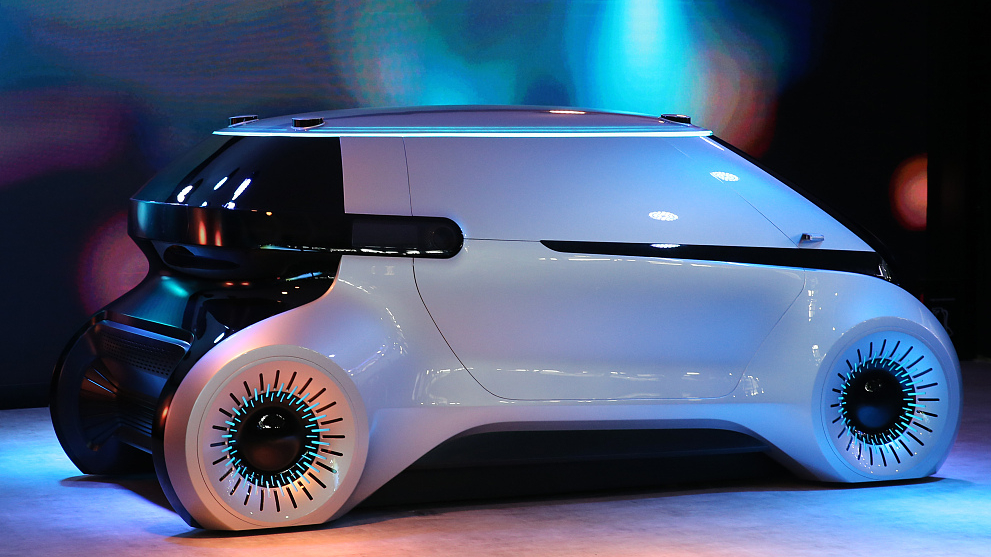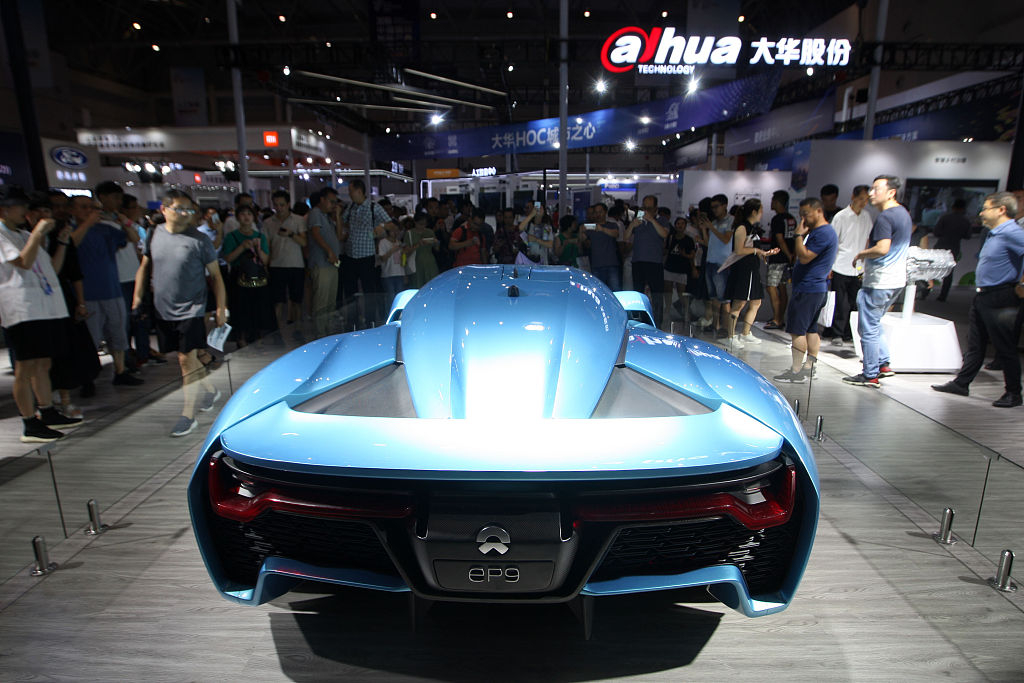

Editor's note: Andy Mok is a research fellow at the Center for China and Globalization. The article reflects the author's opinion, and not necessarily the views of CGTN.
China and the United States are furiously working to create a future for autonomous vehicles. There are two options: Build what is politically feasible or build what works best.
Because of the fragmented nature of political decision making in the United States and the ability for narrow interest groups to hinder or even block the rollout of pivotal societal or technological advances, the U.S. looks to be developing a future for autonomous vehicles that involves significant compromises as well as one created by a slower and more convoluted implementation process.
For example, in Mill Valley, California, the city council voted unanimously to block installation of 5G towers in the city's residential areas because of potential health concerns despite the fact that both the American Cancer Society and the Environmental Protection Agency don't classify radio frequency radiation as cancer-causing for humans. Similarly, the California Supreme Court recently ruled that San Francisco can reject 5G wireless equipment that doesn't meet local aesthetic standards. These types of political decisions add cost and complexity to the implementation of wide advances in the new system and may even completely stop them.

A driverless car NIO EP9 is displayed at the China International Intelligent Industry Expo 2019 in Chongqing, China, August 26, 2019. /VCG Photo
Regarding, autonomous vehicles, battery electric vehicles (BEV) offer the most attractive long-term development path. However, in the United States, Ford Motors plans on introducing hybrid internal combustion/electric autonomous vehicles because the timeline for charging infrastructure cannot be reliably estimated and is not expected in the short-term.
In addition to the impact on the environment from not adopting BEV, cars powered by internal combustion have more parts. As a result, they are more complex, costly and more prone to breakdowns. Therefore, they will be more expensive to own and operate while delivering less dependability.
By contrast, China is approaching this problem in a holistic and strategic way that is likely to result in a system that optimizes and successfully integrates technology, economics, and public policy.
For example, Pony.ai, a Chinese autonomous vehicle startup founded by James Peng, ex-Baidu chief architect, and Tiancheng Lou, a former key team member of Google X's autonomous car project, recently announced a partnership with Toyota Motors. According to both companies, this partnership will run a pilot program in September on public Beijing and Shanghai roads to "accelerate the development and deployment" of autonomous vehicles, using Lexus RX vehicles and Pony.ai's driving system.
But behind this partnership, and others like it, is strong government support which includes detailed, coordinated and integrated policy directives at the national, provincial and municipal level that provides for the availability of critical charging infrastructure and other key resources. In addition, local governments often provide direct in-kind or financial subsidies to accelerate the development of autonomous vehicles while also lowering business risk.

Pony.ai driving in the intelligent transportation experience area at the 2018 World Artificial Intelligence Conference in Shanghai, September 21, 2018. /VCG Photo
According to McKinsey, the management consultancy company, self-driving vehicles, and mobility services in the region are expected to be worth more than 500 billion U.S. dollars by 2030, when the number of autonomous cars on public roads is expected to reach eight million. This represents an enormous economic opportunity. But because autonomous vehicles will require the convergence of automotive, transportation, software, hardware, and data services, these developments will also drive a transformation of many other industries and sectors.
China, with its integrated system of governance and ability to mobilize and coordinate players from every part of the economy and society, is well-positioned to create the best systems for autonomous vehicles. In the race to win the future of autonomous vehicles, it has accelerated into the passing lane.
(If you want to contribute and have specific expertise, please contact us at opinions@cgtn.com.)

Copyright © 2018 CGTN. Beijing ICP prepared NO.16065310-3
Copyright © 2018 CGTN. Beijing ICP prepared NO.16065310-3